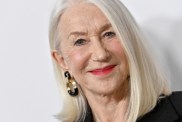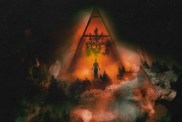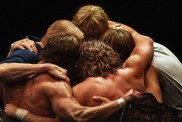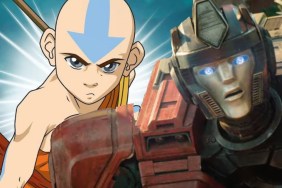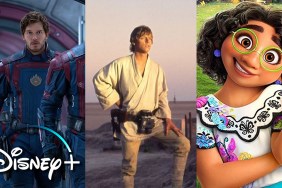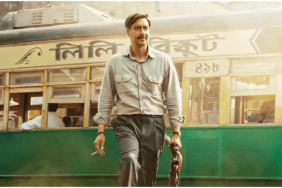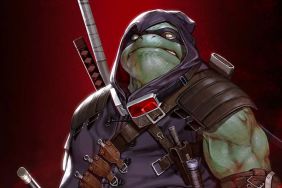
M. Night Shyamalan’s approval rating as a director has decreased dramatically since the release of The Sixth Sense in 1999. The winds began shifting with 2004’s The Village, Lady in the Water two years later was the director’s biggest box-office disappointment to date and The Happening in 2008 did nothing to lift him anywhere near the heights he once enjoyed. Yet this hasn’t changed his studio support, though it has once again found the director needing the support of a new studio after four films with Touchstone, one with Warner Bros. and another at Fox. Paramount is now the backer along with Nickelodeon Films as they hope to turn the Nickelodeon animated television series “Avatar: The Last Airbender” into a full-fledged franchise property with what is dubbed “Book One: Water” in Shyamalan’s The Last Airbender.
The story is set in a fantasy world where unique individuals have the ability to manipulate or “bend” worldly elements — earth, air, fire and water. These distinctions make up the four “nations” of this universe and those with the ability to bend the elements are referred to as “benders.” First introduced as a world in turmoil, the Fire Nation has declared war on the three other nations, suppressing the bending of the other elements and either killing those that defy them or tossing them into concentration camps.
Airbending is thought to have been completely wiped out following the Fire Nation’s attack and the disappearance of the last Airbender, known to be the Avatar (a reincarnating monk that can bend all four elements and thus bring peace to the world), 100 years ago. Yet, the search continues for the Avatar, as only he can stand in the Fire Nation’s way.
By the description I just gave you would think this is a far more serious film than it actually is. In fact, it’s downright juvenile from the treatment of the material to the quality of actors hired to tell the story. It’s a film best suited for audiences aged six and under. Shyamalan’s script feels as if it was written in crayon as it hammers home every plot point one, two and sometimes even three times to makes sure you know exactly what’s going on. Even the opening scroll setting up the story not only rolls up the screen, but is accompanied by voiceover reading the lines for those in the audience who can’t read for themselves. The movie is dumbed down to the point I felt like I should be licking a giant rainbow lollipop and wearing an OshKosh B’gosh jumper.
“Can yoooooou bend air little boy?” one villainous Fire Nation soldier asks Aang, the Avatar the story refers to played by newcomer Noah Ringer. The question is accompanied by a “mu hu ha ha” kind of chuckle as well as snickers from the viewing audience. “My brother and the princess became friends right away,” says Katara (Nicola Peltz) in childish voiceover referring to her Water Nation sibling Sokka played by Twilight star Jackson Rathbone. This film really is amateur hour.
I’ve been a defender of Shyamalan’s for some time, even being one of the lone fans of Lady in the Water, but I saw that film as a children’s bedtime story acted by professionals while this comes off as a coloring book brought to life by greenhorns. Rathbone and Peltz are novice at best. Ringer is out of his element if you’ll excuse the pun. “Daily Show” correspondent Aasif Mandvi is woefully miscast as the evil Fire Nation Commander Zhao and Slumdog Millionaire break-out actor Dev Patel sneers at the camera for most of his time on screen playing the film’s sort-of villain Zuko, the shamed prince of Fire Nation Lord Ozai (Cliff Curtis).
The best performance of the lot comes from Shaun Toub as Zuko’s Uncle Iroh. You may remember Toub as the man who helped Tony Stark build his first suit in Iron Man and here he gets a little more room to roam, but not even he can escape the elementary dialogue. Which begs the question, while the actors certainly aren’t A-grade, doesn’t a lot of blame has to fall on the script and director?
The Last Airbender is the first film Shyamalan has directed that wasn’t from one of his original scripts, but, like his other films, he did write it. Lacking in depth, comedy, wit and intelligence, this is a script that needed serious punching up. The framework is there, but this is nothing more than an outline for a project in development. Perhaps that’s why he went with unproven actors for Airbender, in hopes of making the script seem better in the face of second rate performances.
The lone compliments due this film concern ILM’s visual effects and James Newton Howard’s score. Both do their very best to bring the film out of the playground and into the classroom, but effects and score never seem any more superficial as when they accompany a rather low rent project.
Then comes the 3D. The last second 3D conversion doesn’t look bad as much as it doesn’t look like anything. The only part of the film that actually seemed like real 3D was the studio logo and for much of the film the glasses aren’t even necessary.
Airbender is certain to find early success thanks to the large fan base supporting the original animated series, but even that has been confronted by a grassroots campaign upset with the “racebending” of the cast as certain heroes depicted as Asian in the series are now represented by white actors. I mention this only because it is a part of the conversation, but seeing how I have never seen the television show it did not have an effect on my opinion of the film. This issue, though, may be the only thing The Last Airbender is remembered for because at this point this very well could be the last of The Last Airbenders.

